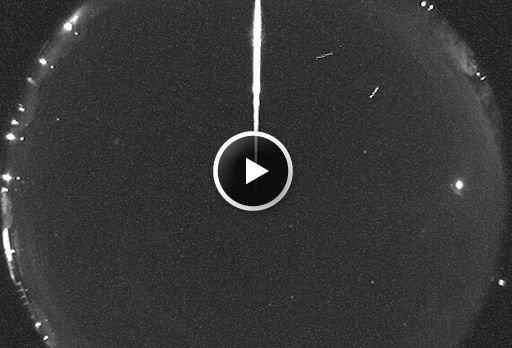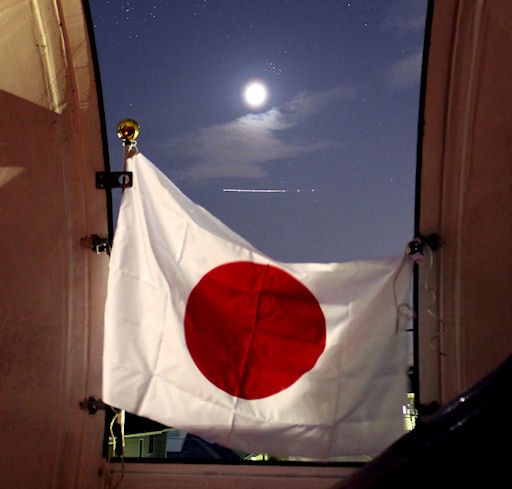Are we alone? Your iPhone has the answer. Download the all-new Drake Equation app to calculate the population of the Milky Way. | | |
FARSIDE ACTIVITY: NASA's STEREO probes are monitoring strong activity on the far side of the sun. A spectacular CME erupted during the early hours of April 8th apparently from old sunspot AR1176. This is the second day in a row that the active region has hurled massive clouds into space. Movies: April 7, April 8.
TENNESSEE FIREBALL: Space rocks have landed in Tennessee. That's the conclusion of researchers who recorded a brilliant fireball streaking over the Smoky Mountain state on Wednesday evening. Bill Cooke of NASA's Meteoroid Environment Office reports: "On April 6th at 8:21:57 CDT, NASA all-sky meteor cameras detected a very bright fireball moving north across the state of Tennessee. First detected 52 miles above the Arnold Air Force base near Tullahoma, the meteor was brighter than crescent Moon and was approximately 2 feet in diameter, with a weight of 200 lbs. It was last recorded 30 miles above the town of Woodbury, Tennessee, moving at a speed of approximately 9 miles per second (32,400 mph)."

Cooke continues: "The NASA Meteoroid Environment Office has reasonable confidence that some fraction of this meteor survived to the ground as one or more meteorites. Calculations are underway to determine the general impact location, which may lie close to the Kentucky border. Eyewitnesses to the fireball are encouraged to make a report to the American Meteor Society or to the Meteoroid Environment Office."
The smart cameras of Cooke's fireball network are able to calculate the orbits of incoming fireballs and backtrack their trajectories into the solar system. "The orbit of this interloper indicates that it came from the Asteroid Belt, with an aphelion well beyond the orbit of Mars."
STEADY SKIES OVER JAPAN: Only a few hours before a new and powerful earthquake shook Japan on April 7th, amateur astronomer Mitsuo Muraoka of Hatoyama, Saitama, photographed a conjunction of the crescent Moon and the Pleiades:

"It was a beautiful sight," says Muraoka. "Only a little while later, however, [I might have had trouble steadying my camera]."
According to the Japan Meteorological Agency, a 7.4 magnitude aftershock of the March 11th super-quake struck offshore at 11:30 pm Japan time. The latest quake did do some damage to the island nation, but no tsunami is forthcoming. Astronomers there can return their attention to the sky, which remained steady throughout.
more moonshots: from Stephan Heinsius of Dreieich, Germany; from Tamás Ábrahám of Zsámbék, Hungary; from Stefano De Rosa of Turin, Italy; from Tavi Greiner of Shallotte, NC; from Doug Zubenel at the St. Philippine Duchesne Memorial Park, Linn County, Kansas; from Rafael Schmall of Kaposfo, Somogy, Hungary; from Alfredo Garcia Jr of Lomita, CA; from Monika Landy-Gyebnar of Veszprem, Hungary;
April 2011 Aurora Gallery
[previous Aprils: 2010, 2009, 2008, 2007, 2006, 2005, 2004, 2003, 2002]

